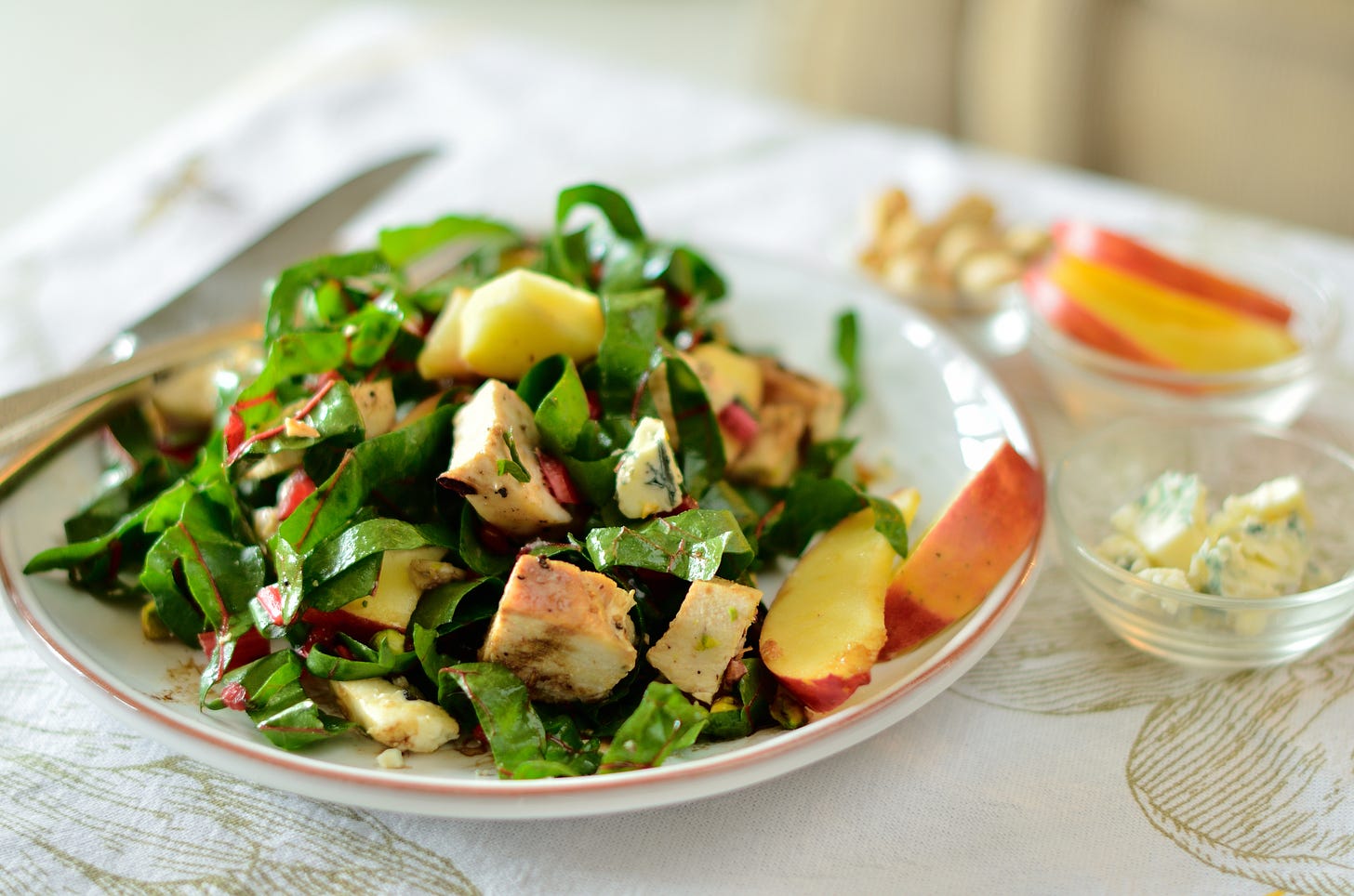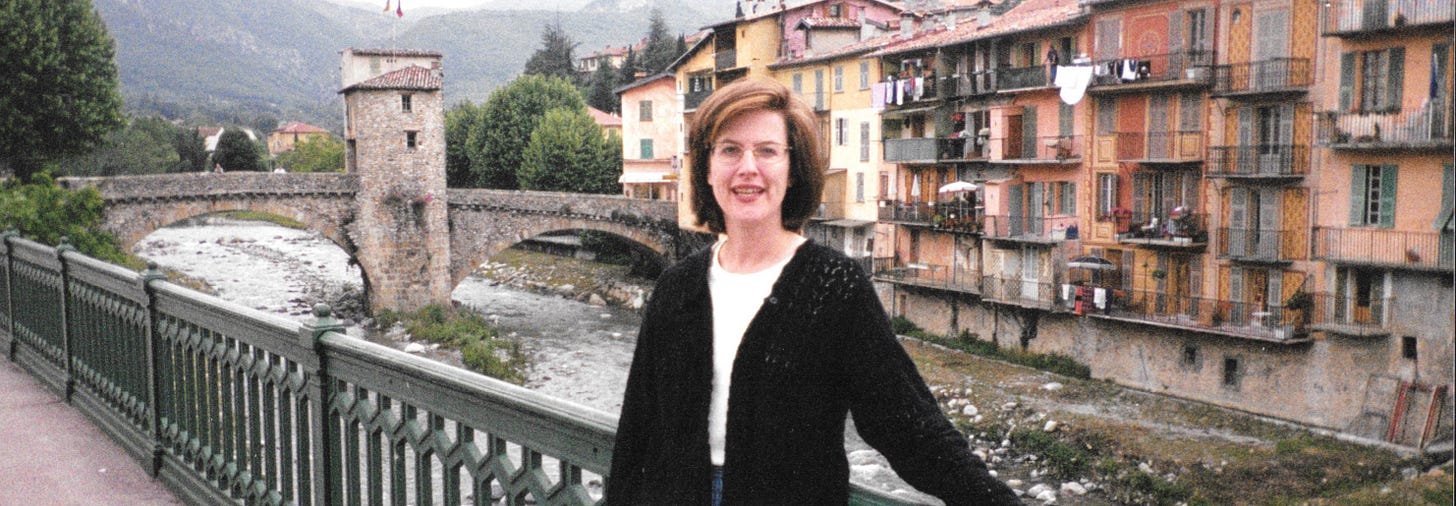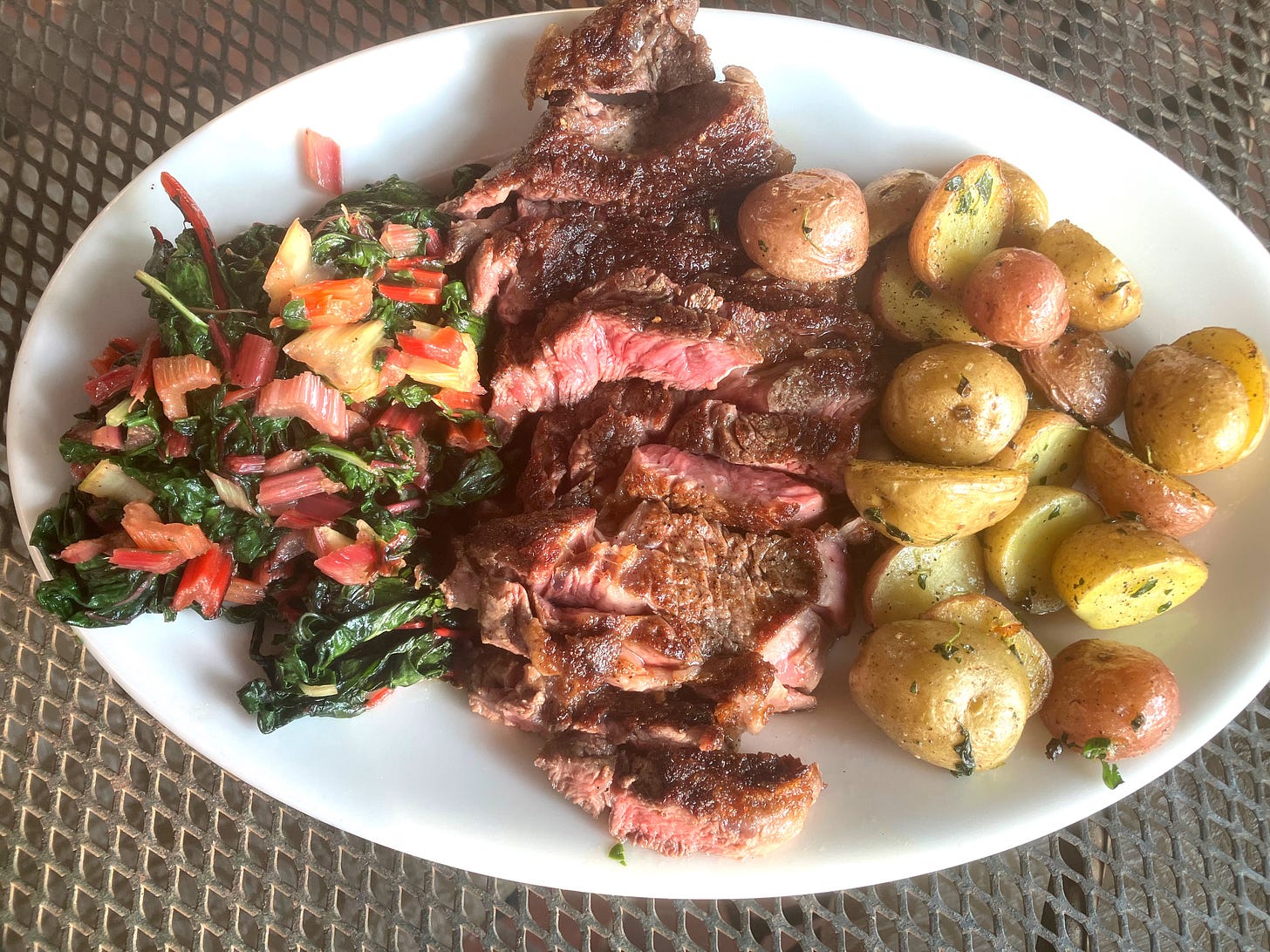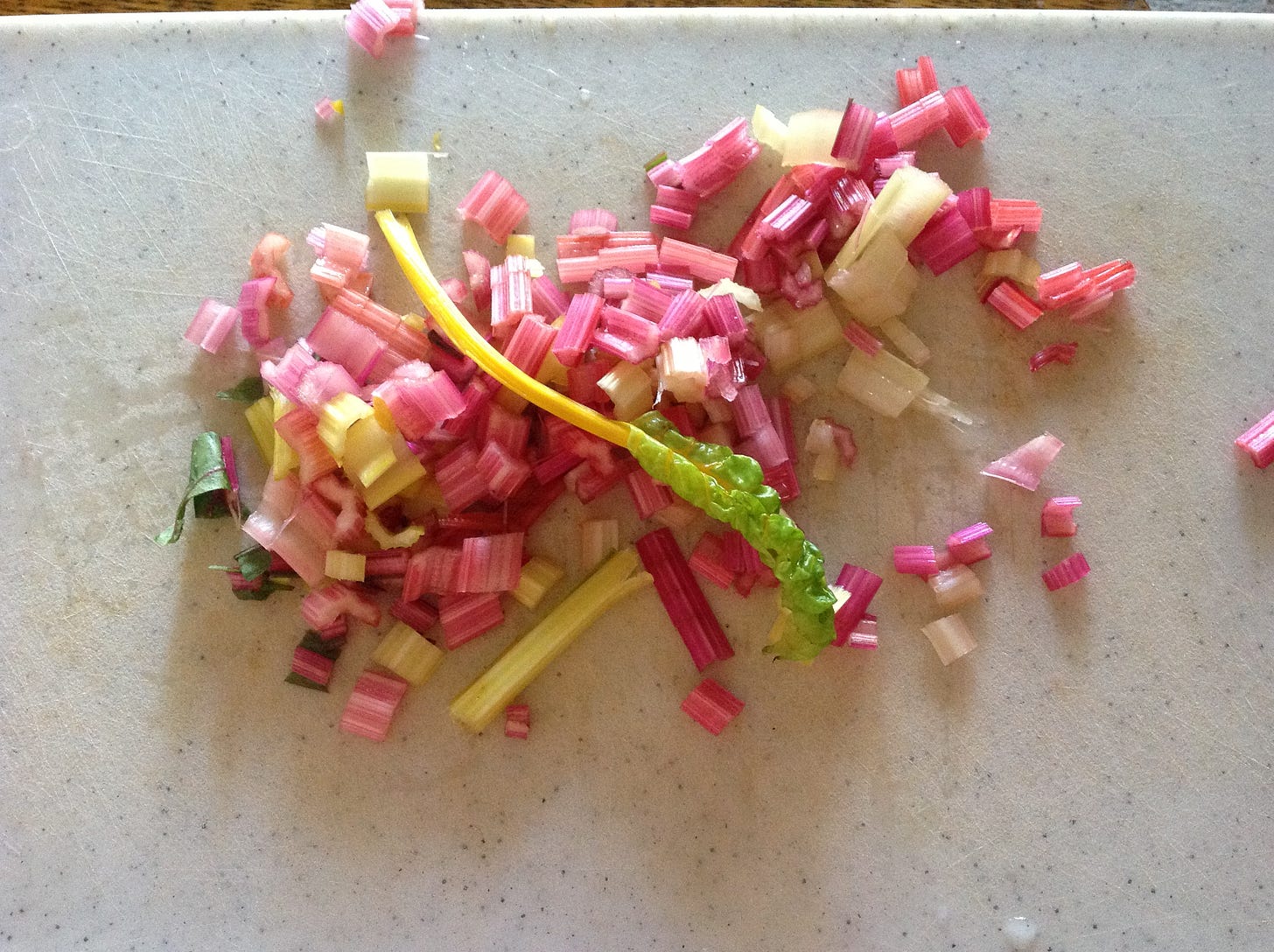The Obscure French Mountain Town That Changed My Greens-Loving Life
I discovered an often-overlooked veggie in Sospel, but I bet you can find it at farmers' market wherever you live. Don't pass it by!
Welcome to my twice-monthly newsletter bringing you stories, travel insights, and the occasional recipe from France and other beautiful places in the world. I’m glad you stopped by. Never miss a post by subscribing today.

Nestled in the Maritime Alps, above the French Riviera, Sospel was sometimes where we escaped for weekends. The small mountain town offered relief from the yacht crowd, those maritime jackasses who’d pilot their vessels into the ports of Villefranche, Cap Ferrat, Beaulieu-sur-Mer, and Cap d’Ail. Weekdays in June, we’d have the coast mostly to ourselves (schools were still in session), but on weekends, Club Yacht descended, clogging cafés, taking over all the beach matelas (fair enough), and tossing their empty Badoit bottles and foie-gras wrappings into the sea after dark (less forgivable). Each morning, the waves delivered a garland of trash that crept toward the shore—plastics and party wreckage tangled with seaweed—for the municipal workers to net from their little boats. The laborious ritual was at its worst on Mondays, after the rosé-soaked hordes had moved on.
Sospel is less than an hour and a half into the mountains by train from Nice, but it feels much farther. Laundry drapes from the balconies of Ligurian-style townhouses, their facades painted in blocks of fading decorative panels. The fortified Pont Vieux stretches across the Bévéra River (more like a mountain stream), as it has since the 17th century. The nearby church—long demoted from a cathedral—has recently been restored. But even when we’d visit, its flaking paint, darkening frescoes, and cool, musty air still bore the weight of its former status as the seat of a bishop.
Discovering Chard
We’d headed from our modest rental across from the train station in Beaulieu-sur-Mer, and (in pre-smart-phone days), landed in Sospel, and wandered up a hill from the train station hoping to find a room at a small Logis de France inn.
In the dining room there, I first discovered Swiss chard. It was on the menu, in a first course called “tarte aux blettes.” I had no idea what blettes were. In fact, for all I knew, blettes were some kind of brain or intestines. But the only other first-course items were mortadella, which I thought sounded like some kind of mushrooms (yes—I was younger and less culinarily experienced then) and a fromage de tête. The latter, I knew, was head cheese. Not a fan.
We ordered the first two, and out came thinly sliced mortadella (of course) with bread and butter, which we loved. And also, a quiche-like tart, thickly green with chopped, cooked Swiss chard, which we loved even more.
What was this veggie, which tasted deeper than spinach, but a little beet-like, too?

Over the years, I’d cross paths with Chard again and again in France, and as food got more interesting in my neck of the woods in the U.S.A, I’d see it cropping up at farmers’ markets here and there. By 2011, when I published the Bonne Femme Cookbook, I was sure to include a recipe for a Swiss Chard salad.
And yet, Swiss Chard is still a hard sell state-side.
I don’t get it. Most Americans like spinach. And plenty of people like beets—otherwise, why would roasted beet salads be on every restaurant menu these days? So why aren’t we seeing Swiss Chard (which is both beet-like and spinach-like) in more restaurants—and in more recipes—in our necks of the woods?
Do Yourself a Favor. Give It a Go.

Not sure? While I truly love a tarte aux blettes, and I swear by my salad recipe, above, a good “starter recipe” for Swiss Chard is simply to saute it in olive oil and serve it as a side, as you would sauteed spinach. You’ll know right off if you like this—and I bet you will.
How to Sauté Swiss Chard
Note that I prefer rainbow chard. It’s just so pretty! But if all you can find is regular green and white chard, it’s truly tasty, too.
One bunch usually serves two. (It’s kind of like spinach in that it cooks down quite a bit!).
To saute:
Wash and dry the chard well; pat, spin, or shake dry.
Trim and discard the toughest ends of the stems. Then, cut the stems away from the leaves. Chop the stems.
Roll the leaves (like a cigar) and slice into 1-inch ribbons.
Heat a generous drizzle of olive oil in a skillet until it shimmers. Add the stems and saute for 2 to 3 minutes or until mostly crisp-tender. Then, add the leaves and saute until wilted.
Salt and pepper to taste. Serve.
P.S.: If you wish, you can saute a little minced garlic with this! Add it just after you’ve cooked the stems; saute until fragrant, then add the leaves.
Share with Your Favorite Cook!
P.S.: I Was on the Splendid Table. Take a Look.
I was on The Splendid Table a couple weeks ago, and they made this beautiful 45-second preview video for the segment. Check it out, and be sure to check out the episode. They asked me some insightful questions about what it was like to review restaurants in the Midwest after spending summers in France—without sounding too pretentious for words! (This video tells you why it was actually pretty easy to do!)
Check out the full episode of The Splendid Table here. Find the book, which offers insights into how France informed my life as a critic and food writer, here.







I was also going to mention that I ate a lot of Swiss chard growing up in the USA thanks to my grandmother, who, like others mentioned, grew up on a farm. It was smaller than the huge blettes available here in France, which I find unwieldy, but I have started to notice smaller ones, especially at markets.
Growing up on a farm in NW Iowa in the 50’s our grocery stores offered limited fresh produce . Most families grew their own.
My mother was no exception ! A wonderful ,adventurous soul she added new veggies to the standard fare each year and her garden was enormous .
I remember eating Swiss chard from the time I was a wee one and to this very day it’s a favorite . She would usually steam it until softened but not mushy and serve with butter, vinegar and salt . So simple and so good !
It reminds me how very fortunate I was to be a farm girl .